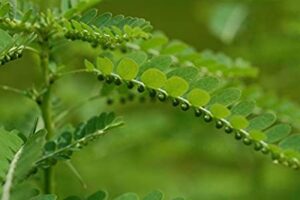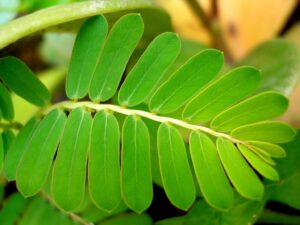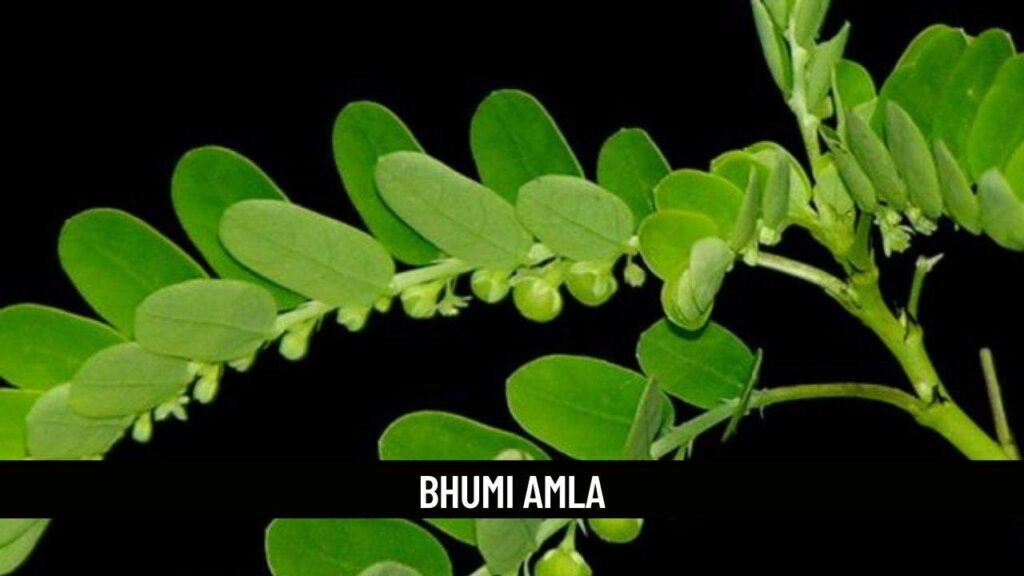Ayurvedic
Bhumi Amla (Phyllanthus niruri) Herb Overview
Bhumi Amla (Phyllanthus niruri) is a tropical plant that grows 50-70 cm in height. The herb is known as ‘Bhumi Amla’ because it is a small plant present in Bhumi (land) and is usually found in the rainy season. The fruits of Bhumi Amla are tiny, smooth in capsules form. The flowers are numerous and are pale green.
The herb is rich in antispasmodic, astringent, laxative, appetizer, hepatoprotective, hypoglycemic, antiviral, hypotensive, analgesic, and diuretic properties. The herb is mainly used in managing liver disorders and reverses any damage caused to the liver. The regular use of bhumi amla reducing gastric acid production as well as protecting the stomach lining against damage caused by excessive gastric acid and helps to prevent ulcers.
Table of Contents
Scientific Classification of Bhumi Amla (Phyllanthus niruri)
- Kingdom: Plantae
- Family: Phyllanthaceae
- Order: Malpighiales
- Genus: Phyllanthus
- Species: P.niruri
Bhumi Amla (Phyllanthus niruri) Synonyms:
- Sanskrit: Mahidhatrika, Bhumyamalaki, Bahuphal¡
- Assamese: Bhuin Amla
- Bengali: Bhumamla, Bhumi amalaki
- Gujrati: Bhoi Amali, Bhony amari, Bhonyamali
- Hindi: Bhui Amala
- Kannada: Nelanelli
- Kashmiri: Kath
- Malayalam: Kizanelli, Keezhanelli, Ajjhada
- Marathi: Bhuiawali
- Oriya: Bhuin Amla
- Punjabi: Lodhar
- Tamil: Kizhukai nelli, Kizanelli
- Telugu: Nela usirika
Bhumi Amla (Phyllanthus niruri) Description:
 a) Microscopic:
a) Microscopic:
Root: The roots of Bhumi amla are small, having about 2.5 cm long, nearly straight, gradually tapering with several fibrous secondary and tertiary roots. The external surface is short and light brown.
Stem: The stem is light brown, slender, glabrous, cylindrical having 20-75 cm long, branching profusely towards the upper region bearing 5-10 pairs of leaves. Its odor is indistinct, the taste is slightly bitter.
Leaf: The leaf-let is arranged in two rows with a rachis. It is alternate, opposite, and decussate and is almost sessile, oblong, entire up to 1.5 cm wide. The color is greenish-brown, the odor is indistinct and the taste is slightly bitter.
 b) Microscopic: The root-transverse section shows 4-6 layers of cork consisting of thin-walled, rectangular, tangentially elongated with radially arranged cells and is filled with reddish-brown content. The secondary cortex consists of 8-10 layers of tangentially elongated, thin-walled, parenchymatous cells. The secondary phloem consisting of sieve elements, phloem parenchyma, and is transverse by narrow phloem rays. The secondary phloem consisting of sieve elements, phloem parenchyma, and transverse by narrow phloem rays.
b) Microscopic: The root-transverse section shows 4-6 layers of cork consisting of thin-walled, rectangular, tangentially elongated with radially arranged cells and is filled with reddish-brown content. The secondary cortex consists of 8-10 layers of tangentially elongated, thin-walled, parenchymatous cells. The secondary phloem consisting of sieve elements, phloem parenchyma, and is transverse by narrow phloem rays. The secondary phloem consisting of sieve elements, phloem parenchyma, and transverse by narrow phloem rays.
Stem: The transverse section of the stem shows a single-layered epidermis composed of thick-walled, flattened, tangentially elongated cells. The older stem shows 4-5 layers of cork composed of thin-walled, tabular, tangentially elongated, and radially arranged cells. The cortex is composed of 4-6 layers of oval, thin-walled, tangentially elongated, and parenchymatous cells.
The pericycle in the stem is represented by a discontinuous ring, composed of several tangentially elongated strands of lignified fibers with thick walls and narrow lumen. The secondary xylem is composed of vessels, fibers, parenchyma and traversed by numerous uniseriate rays. The vessels are mostly simple pitted, a few show spiral thickening.
Leaf: The transverse section of the leaf shows a biconvex outline and epidermis on either side. A palisade layer is present beneath the upper epidermis, intercepted by a few parenchymatous cells in the middle. The meristele is composed of small strands of xylem towards the upper surface and phloem towards the lower surface. On either side, the epidermis is composed of thin-walled, tangentially elongated cells, covered externally by a thick cuticle. The mesophyll is composed of 3-4 layers of loosely arranged cells having several veins traversed in this region, a few cluster crystals of calcium oxalate present in spongy parenchyma.
Powder: The powder is brown colored, and under the microscope, it shows fragments of cork cells, vessels, and fibers.
Identity, Purity, and Strength of Bhumi Amla (Phyllanthus niruri):
- Foreign matter Not more than 2 percent, Appendix 2.2.
- Total Ash Not more than 16 percent, Appendix 2.3.
- Acid-insoluble ash Not more than 7 percent, Appendix 2.4.
- Alcohol-soluble extractive Not less than 3 percent, Appendix 2.6.
- Water-soluble extractive Not less than 13 percent, Appendix 2.7
Chemical Constituents of Bhumi Amla (Phyllanthus niruri):
Bhumi amal is rich in flavonoids, terpenoids, lignans, tannins, polyphenols, glycosides, ellagitannins, ricinoleic acid, alkaloids, phyllanthin, hypophyllanthin, niruriside & phyltetralin, acidic arabinogalactan, and diterpenes can be found in this herb.
Ayurvedic Properties and Action of Bhumi Amla (Phyllanthus niruri):
- Rasa (taste): Madhura, Tikta, Kshaya
- Guna (quality): Laghu, Ruksha
- Virya (potency): Sheeta
- Vipaka (taste conversion after digestion): Madhura
- Karma: Rochan, Mutral, Pittashamak, Dahanashini, Trushna, Vishahara.
Ayurvedic Formulations made by Bhumi Amla (Phyllanthus niruri):
Chyawanprash, Pippalyadi Ghrita, Madhuyashti taila, Shatavari Guda.
Therapeutic Uses of Bhumi Amla (Phyllanthus niruri):
Bhumi amla can be used in Kasa, Kustha, Pandu, Prameha, Mutraoga.
Dose of Bhumi Amla (Phyllanthus niruri):
10-20 ml of the drug in juice form.
3-6 of the drug in powder form.
Reference:
Ayurvedic Pharmacopeia of India.
For regular health updates, Please follow our Social Pages


